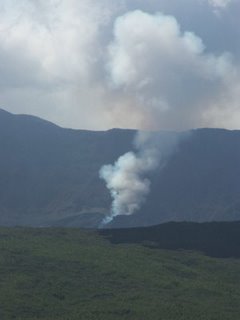“These are the worse viruses in the world,” said Levitt.
For seventeen years, Neil Levitt, an energetic man with wire rim glasses and thinning salt and pepper hair, worked as Senior Research Scientist at a high security “hot suite.” His task was to develop a vaccine against the chikungunya virus, an organism considered by the Army to be a biological warfare threat. Previous attempts by the military to develop a vaccine using a specific cell line had been abandoned when the viruses reverted to lethal form after inoculation into human subjects. Levitt found that similar problems were occurring in mice which received injections of viral fluid. He informed his superiors of the problem and recommended that the cell line not be used for human vaccine production. The results of his study were, however, deleted from the USAMRID report which was sent to Congress. Instead, the military reported on the vaccine’s progress in glowing terms.
During a routine inventory in 1981, Levitt discovered that the entire stock of this monkey-
derived chikungunya virus was missing from his lab’s locked freezer. About 60 vials contained 2500 ml of virus. Each milliliter housed over one billion virus particles, enough virus, he told his bosses, “to infect the entire world’s population.” As Levitt later recalled, “They told me, Don’t worry. Look around for it. It will turn up.” It never did and Levitt ended up blowing the whistle to Congress.
from: www.aavs.org/images/spring2000_text.pdf
The following is worth reading in full and can be found on http://www.rense.com/general69/nowr.htm
- the typos are theirs!
Reunion Island Chikungunya
Outbreak Now 40,000 CasesFrom Patricia Doyle, PhD dr_p_doyle@hotmail.com
1-25-6- This appears to be a serious Chikungunya outbreak. Has the patogen mutated? This outbreak, which is seriously underestimated, appears to have complications of myelo-meningo-encephalitis. There is an unidentified illness in Angola which has symptoms quite similar to the symptoms we are seeing in Reunion Island.
-
- Has this illness spread beyond Reunion? Chikungunya is transmitted by the bite of an infected mosquito. The numbers of cases are high for a mosquito borne virus.
-
- More information on the current virus sequence would be needed to determine if the virus has mutated to a more deadly form.
-
- Patricia Doyle
-
-
- From Lionel Suzon
- lionel.suz@gmail.com
- 1-23-6
-
- I'm a doctor at the southern end of Reunion Island. First of all, almost everybody here, especially doctors, agree that the epidemic is underestimated. According to an unofficial estimate by the "Conseil Departemental de l'Ordre des Medecins", there would be almost 40 000 cases.
-
- 2 weeks ago, I was personally seeing about 5 new cases of chikungunya fever each day, whereas there were officially about 100 new cases a week for the entire island. The epidemic began 11 months ago and was focused in a limited number of areas. During the last week, the epidemic has become explosive and out of control, but I was on holiday, so I didn't notice it personally. On Monday, when I'll be back to work, I'm afraid the number of new cases will be much higher.
-
- This disease is usually considered a benign one, and this is also my clinical impression, even if some patients suffer arthralgias or stiffness for months. But some unexpected complications have occurred here: several cases of myelo-meningo-encephalitis have been reported, some in neonates, with a strong suspicion of maternal-foetal transmission. Some wonder if we will see the first-ever fatal case of chikungunya.
-
- Fear, as fever, is now spreading in the population. Unfortunately, communication is mainly controlled by local press and politicians. I would personally prefer a recognised expert.







